The well-known Wave Rock is a must-see if you’re looking for interesting tourist attractions in Western Australia (WA). The rock is also surrounded by many enjoyable activities that keep you busy for days. Take a look at a couple of them below.
1. Wave Rock: Special Western Australian Tourist Destination
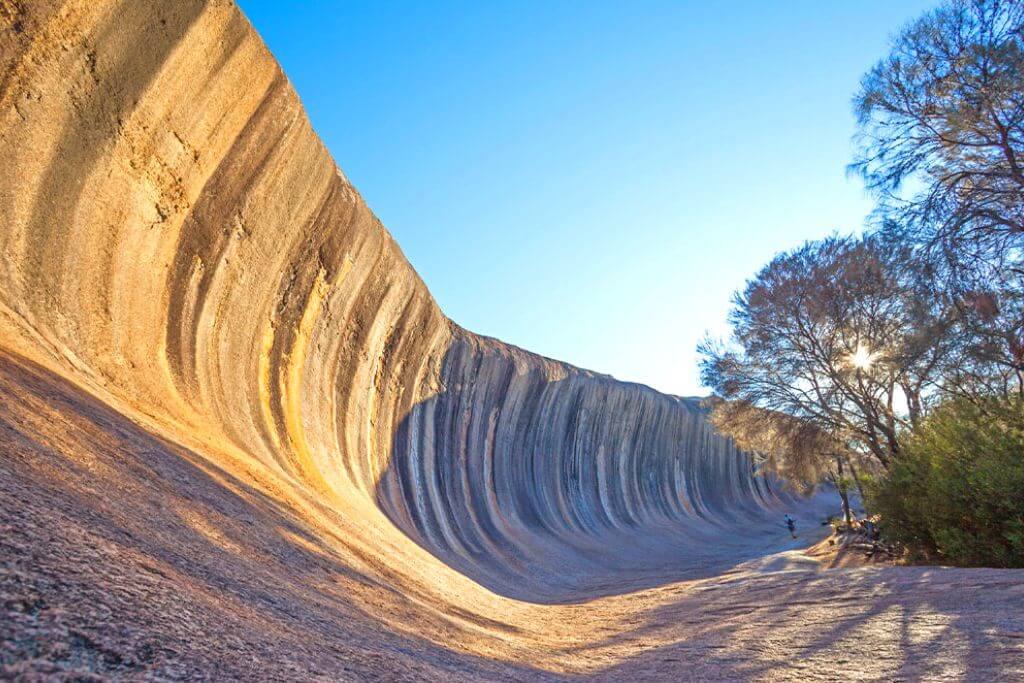
Wave Rock is a remarkable creation comprised of bands of grey and red granite 27 million years old. It looms above the water like a massive 15-meter wave poised to crash. Additionally, neighboring Bates Cave contains examples of Aboriginal rock art. Each year, hundreds of tourists flock to the Wave Rock Area because of the nearby rocky outcrops and carpets of vibrant wildflowers.
2. How is Wave Rock formed?
Wave Rock is 100 meters long and 15 meters high. It resembles a large wave that is poised to break. It is one of many intriguingly shaped stone outcrops in the area. Scientists and the general public have been interested in its development for years.
The rock is a granite inselberg that has undergone weathering due to wind and rain over millions of years. The deep grey, red, ochre, and sandy-striped wave you see today was created over time by these erosional pressures. Besides, amazing rock colors result from minerals being washed down the rock.
The vertical stripes of algae that run along the rock’s surface draw attention to its curved shape. The stone is initially black due to the algae. However, during the dry season, it turns brown. So, many photographers have taken advantage of Wave Rock‘s ability to play with light and perspective as it changes color at various times of the day.
3. What is the Aboriginal legend around Wave Rock?
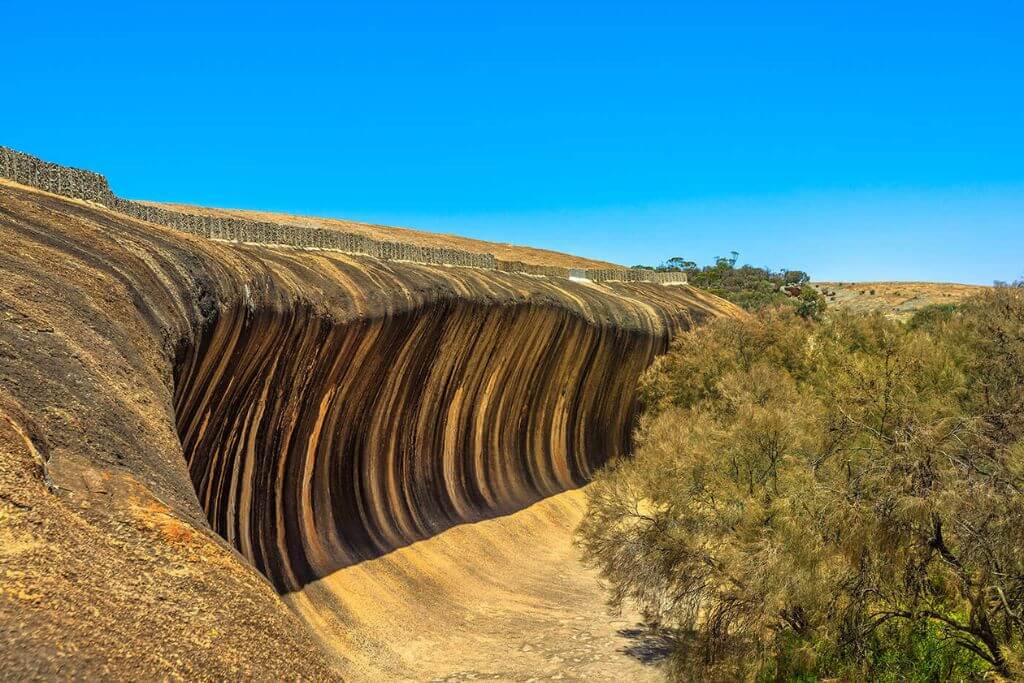
The amazing rock formation, which stands at 14 meters, holds significant cultural value for the local Ballardong people. A Rainbow Serpent formed Wave Rock in a Dreamtime tale after consuming all the land’s water and dragging his body across it.
4. Where is Wave Rock?
Wave Rock is 340 kilometers southeast of Perth in the eastern wheat belt. A convenient day excursion from Perth and about 3 kilometers from the town of Hyden.
5. What time of year is the best for visiting Wave Rock?
- January, February, March, April, May, June, September, October, November, and December are the months with the nicest weather in Wave Rock.
- Besides, the warmest months, on average, are January, February, and December.
- However, July and August are the two coolest months.
6. Some attractions near the rock
Hippo’s Yawn
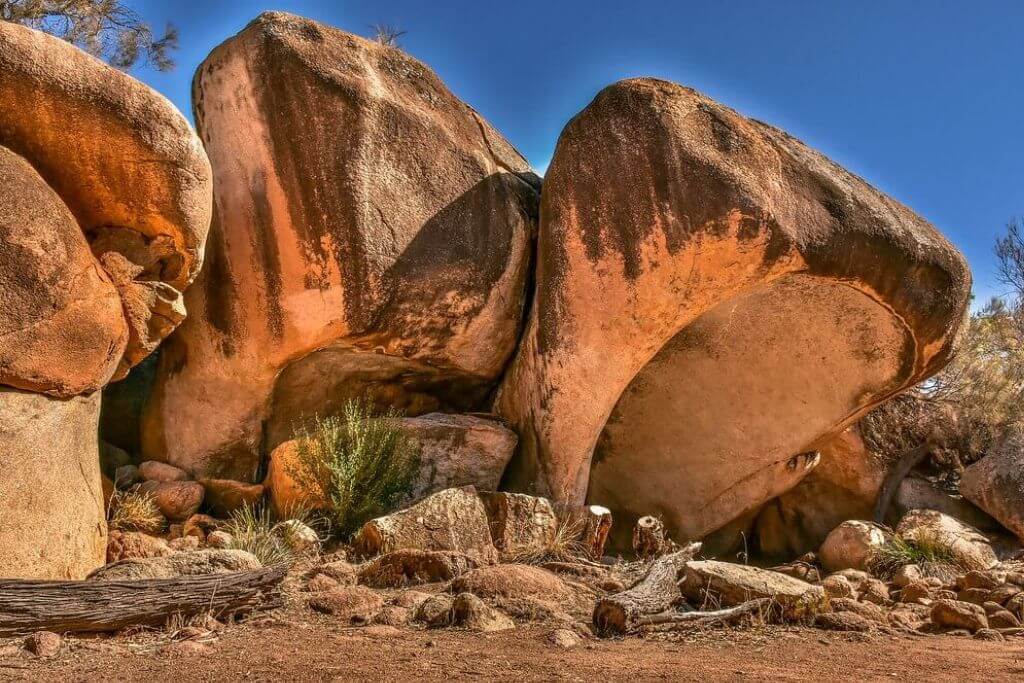
Hippo’s Yawn is the second most frequented location in the area, and it is another magnificent rock formation connected to Wave Rock by a one-kilometer walking path. The considerably longer stretch at Wave Rock also has the ideal companion of these granite boulders, which seem to emerge from the ground below. Besides, you can see a stunning variety of beautiful plants and animals, including many birds, across the entire area.
Lake Magic
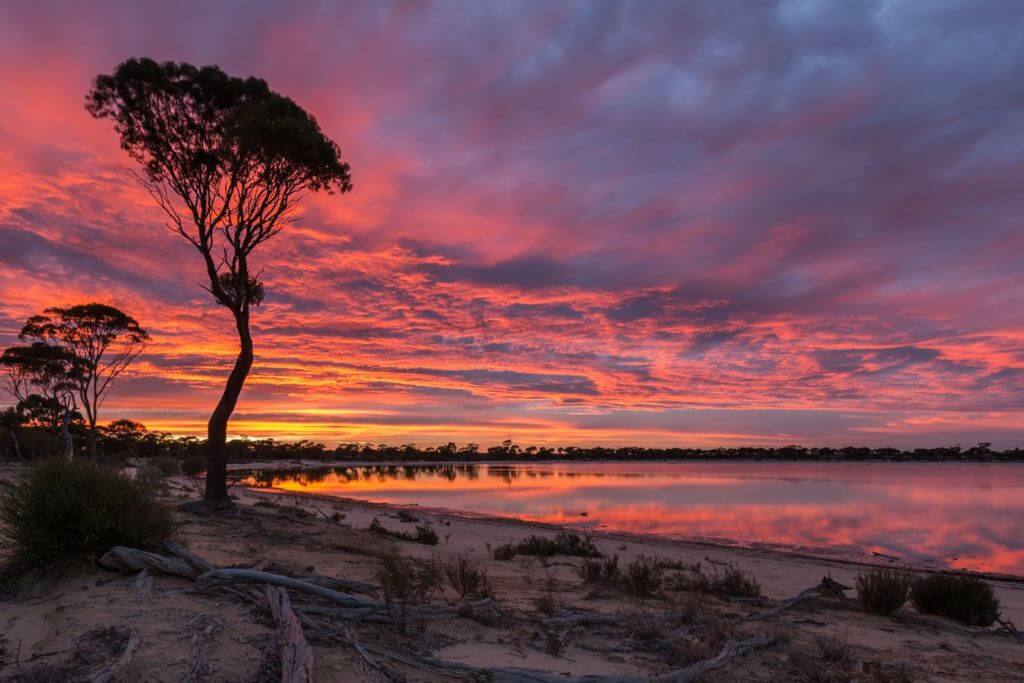
The remarkable way in which Lake Magic’s sparkling waters transform from brilliant color to vibrant color in different lightings throughout the day is what makes it so err, magical. As beautiful to visit in the morning when the twilight colors fill the sky as it is in the evening when you may appreciate it while sipping a glass of wine from Western Australia as the sun sets and the sky turns gold and orange.
Salt Baths
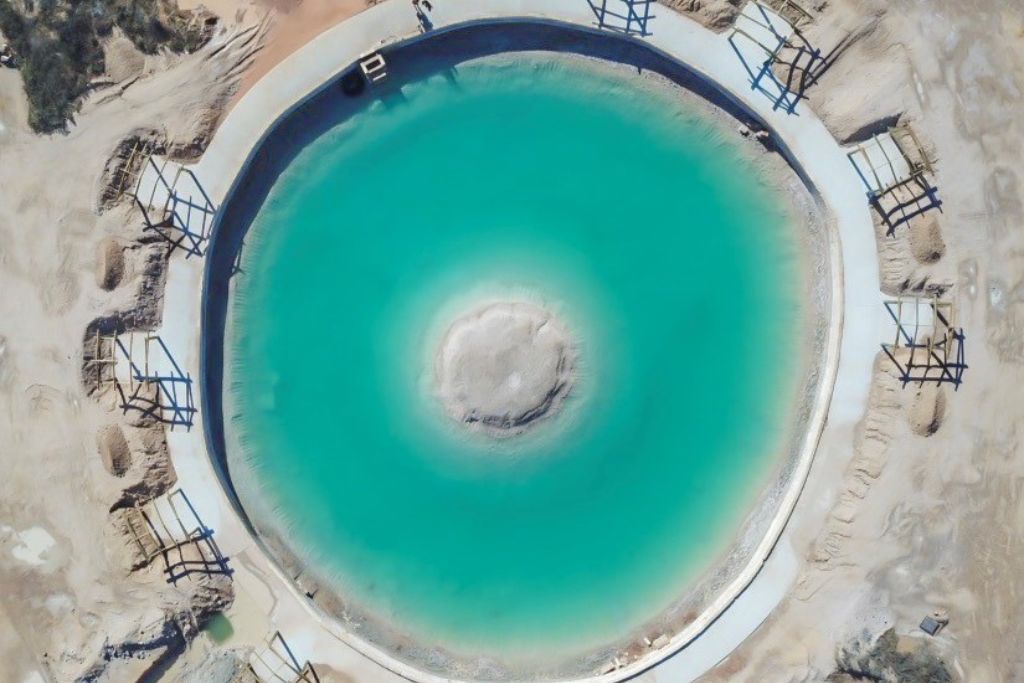
This luxurious salt bath was created to have relaxing and restorative effects and also has more buoyancy and healing qualities than the Dead Sea itself! You are also welcome to visit, unwind, dip, and unwind on the bath day beds in this exquisitely serene area of Wave Rock. Besides, a genuine sense of tranquil pleasure can be easily induced thanks to the buoyancy of the pool, which gives the swimmer a sense of weightlessness.
The Humps
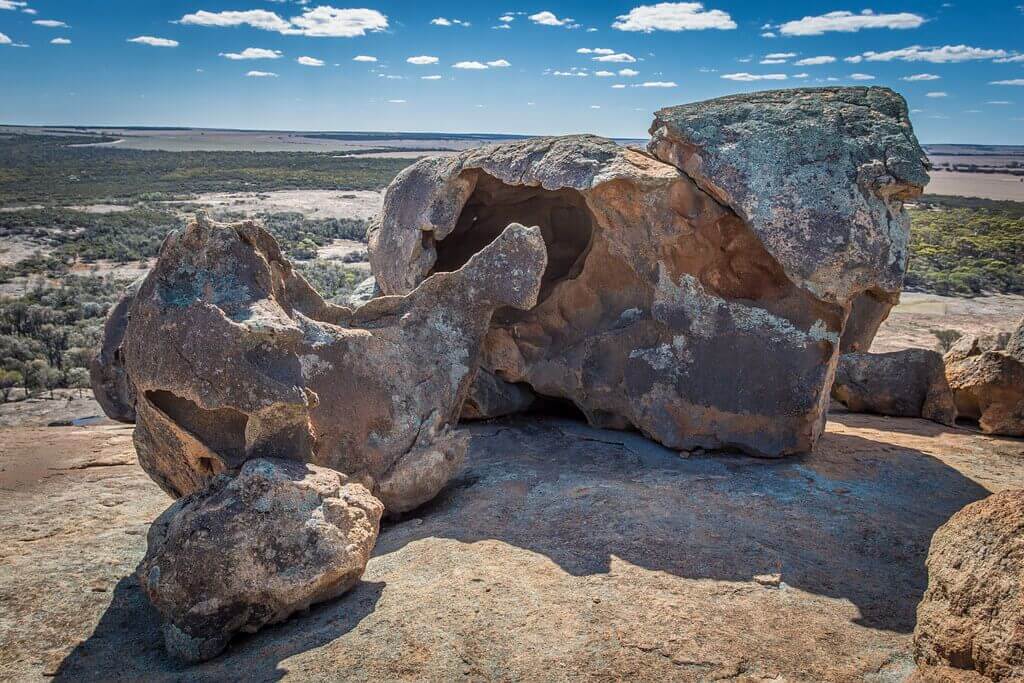
The Humps is a massive granite formation protruding from the earth below. It is just a 15-minute drive from Wave Rock and immediately attracts notice from visitors as they approach. You also can meander around on one of the several walking pathways present in this unusual land formation at your own pace.
Mulka’s Cave
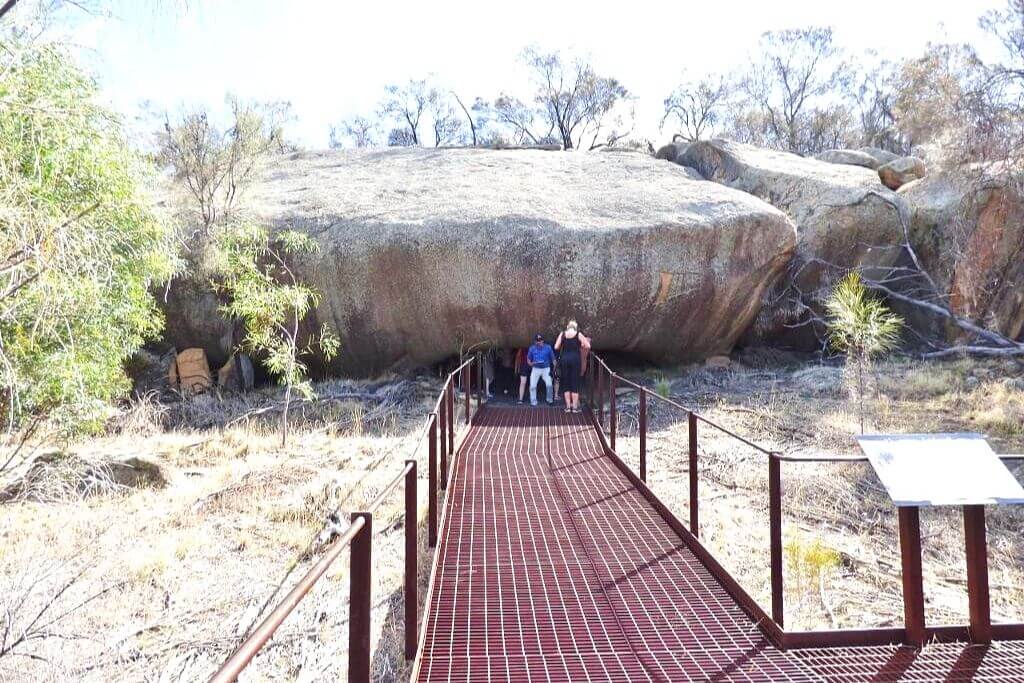
Adjoining The Humps is a cave formation in Mulka’s Cave that is incredibly cool and steeped in indigenous legend in the area. Look closely at the hand stencils that are thought to depict ladies and children after your eyes have adjusted to the illumination. Although it can be challenging to date these eternal pieces of art, they nonetheless provide a wonderful sight to behold and wonder at.
